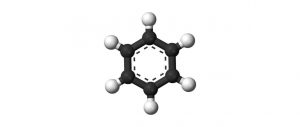Liquefied Petroleum Gas is the two hydrocarbon gases of butane and propane, or a combination thereof, that are kept in a liquid state. Usually small amounts of compounds such as propylene and butylene are also present in liquefied petroleum gas. LPG is mostly used for heating applications and as a fuel for vehicles. It is also used in the manufacture of sprays and as a cooling gas in refrigeration appliances such as refrigerators and freezers.
Al-Payji in the refinery is a by-product of natural gas refining and crude oil refining. The calorific value of liquefied petroleum gas is 46.1 megajoules / kg, which is higher than gasoline and fuel oil and produces higher energy in equal weight, but its calorific value is less in equal volume because it is a gas and has a lower density. Each liter of liquefied petroleum gas weighs 500 to 580 grams and each liter of gasoline weighs 710 to 770 grams. This gas turns into a liquid at a temperature of 21 degrees Celsius under a maximum pressure of 8 kg / cm2; And at the time of production, it has no color, smell or even taste, for added safety, sulfur compounds called mercaptan (which includes ethyl mercaptan and methyl mercaptan) are added to it.
Al-Puji should not be confused with Al-Anji (liquefied natural gas). Aluminum is actually natural gas (mainly methane and ethane) that liquefies for easier and more economical transportation. Cyanide is also a natural gas that is compressed to take up less space.
Home use and small industries Most people call LPG liquefied petroleum gas (LPG) sold in Iran in 50 kg, 11 kg (household cylinder), 5 kg (large picnic) and 2 kg (medium picnic) and 1 kg (small picnic) cylinders in Iran. (Before cities became natural gas piping, the main use of homes was for stoves, and in times of power outages for lighting, it was cylindrical liquefied petroleum gas, which is less commonly used in homes after natural gas network piping for every home.) In small industries where the industrial consumer cannot afford to install large gas tanks or does not have a place to install these tanks, he uses 50 kg cylinders that are portable and connect it to the building’s gas pipeline outside the building.
Industrial consumption For industrial use, LPG is used in larger tanks installed at the industrial production site. These tanks are filled by liquefied petroleum gas (LPG) trucks directly from refineries or liquefied natural gas distribution companies.
Standard capacities of industrial liquefied gas tanks Reservoirs are divided into the following capacities as standard according to the size of its water capacity (the amount of water in which it is placed). 125 gallons, 250 gallons, 500 gallons, 1,000 gallons, 1,500 gallons, 2,000 gallons, 3,000 gallons, 6,565 gallons, 9,800 gallons, 12,000 gallons, 20,000 gallons, 30,000 gallons These tanks, except for 125 and 250 gallons, are all cylindrical and all include the body of the tank and two lenses for its head; And in tanks of 9800 gallons and above, there are manhole valves for it.
Uses of LPG This gas is used in many places where it is not possible to use other sources of fuel because it is easily transportable.
Homes for stoves and heating appliances Factories for fueling furnaces and burners (and in some for secondary fuel) Industrial and commercial kitchens IGNITION system for gas turbines in combined cycle power plants Second fuel for cars LPG consumption in the car Today, in many developed countries of the world, including Turkey, South Korea, Russia, Italy, Poland, Britain and the United States, liquefied petroleum gas is used as car fuel, which is called autogas.
For example, in Turkey, 3.3 million tons of autogas is consumed annually in 4.5 million cars, and in South Korea, 3.1 million tons of autogas is consumed annually in 2.1 million cars. This fuel is known as clean fuel in Europe. 28 million tons of autogas is consumed annually in the world
LPG consumption in Iran The main consumption of this fuel in Iran is in the domestic and transportation sectors (as the second fuel for dual-fuel vehicles).
Of course, the consumption of this fuel in Iran has been associated with controversy. Due to the economic efficiency of gasoline, people use it in cars, and this has led to a decrease in the number of villages, and for this reason, officials from the Ministry of Oil, governorates and some officials of the provincial standard organization to control consumption in the automotive sector, interviewed Many have stated that liquefied petroleum gas is a very dangerous, unsafe and highly polluting fuel. However, some experts believe that this is not the case, and the reason is that this fuel is used as an alternative to gasoline and diesel in many developed countries, especially in Turkey, South Korea, Russia, Italy, Poland, Britain and the United States. Used.
Is LPG a dangerous and unsafe fuel? Many officials in Iran refer to this fuel as an unsafe and dangerous fuel. But if the standards related to the tank and its refueling are observed, according to the research that has been done in this field, this fuel can be safer than gasoline and diesel.
There are three main factors involved in LPG safety:
1- Tank pressure 2- Explosion and flammability limits 3- Safe dual combustion in factory or in standard workshops The pressure of the liquefied petroleum gas storage tank is 8 bar, which is very small and does not cause an explosion. The flammable range of LPG with air is 2.4% to 9.6%. This means that when the LPG concentration in the air is less than about 2.4% or more than 9.6%, the mixture does not catch fire. In case of converting the car standard to dual LPG burner, none.
Dena Media



